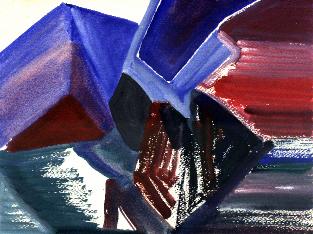 |
|||
The Medicine of the Spiral
Instrumentation: Ensemble 1 (6 performers): West African drums: 2 djembes (1 soloist), 2 kidis, 1 kloboto; and drum set; Ensemble 2 (4): piano (soloist), harp, guitar, percussion (rainstick, water drum or talking drum, rattles, water tam-tam, berimbau); Ensemble 3 (7-10): 2(3) violins, 2(3) violas, 2(3) cellos, double bass (soloist); Ensemble 4 (10): Soprano soloist, SATB choir (minimum 8), percussion (tubular bells, vibraphone); and four actors and four dancers The Medicine of the Spiral is an interdisciplinary performance work bringing together theater, dance, and live music. Through storytelling and dance, the piece explores some of the basic challenges and questions we face as human beings. What is our relationship to creative energy and its volatile counterpart? What is our ability to feel, be relational, and part of community? What is our relationship to our bodies and the earth? What is our vocation in life, and can we articulate it and manifest it in the world? The spiral is used as a symbol of motion, transition and change through the recurrence of such questions in our lives. It also provides the musical/theatrical structure for the entire piece: an expansion and contraction of time between two focal points. As the spiral expands out from its initial focal point, it rotates clockwise around the four directions (E, S, W, N). The cycle repeats itself three times during the piece. Each direction has a corresponding musical ensemble and soloist, and a masked storyteller and dancer who have a teacher/student relationship. The dancers are accompanied by their own soloist who improvises to their movement, and are seen as mirrors of human response to struggle and change. Each encounter with the storyteller then challenges the dancer to a new level of responsibility. The fully-composed ensemble music is intimately connected to what the storyteller conveys, creating through sound the world of images and emotions evoked by the story. Some of the sounds include fiery polyrhythmic drumming, atonal counterpoint in an ensemble of plucked/hammered instruments and water percussion, microtonal string writing as well as 4-part grooves, and a choir that sings tone clusters, modal lines, and extended vocal techniques.
|
||